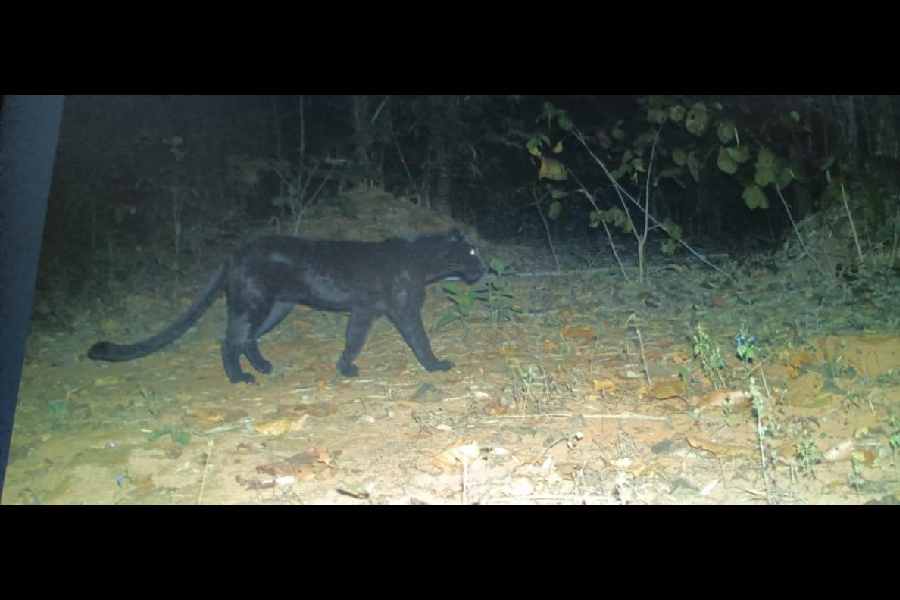Odisha, which boasts of melanistic Bengal tigers, has also recorded the presence of rare melanistic leopards, popularly known as black panthers.
These black panthers have been spotted in three forest divisions of Odisha. An official said that the black colour is due to pseudo-melanism in which melanin, a dark-coloured pigment, is developed in the skin.
It came to light during the All Odisha Leopard Estimation-2024. The report was released on the celebration of the 70th State-level Wildlife Week on October 3.
“We are not revealing the exact number of black panthers and not even revealing their locations as they may fall to poaching,” said a senior official of the forest department. The first panther was spotted in the Hemgir region in Sundergarh district of Odisha.
Sundergarh Divisional Forest Officer (DFO), Sundergarh, Mirase Pradeep Devidas told The Telegraph: “For the all Odisha Leopard Estimation, we had set up trap cameras.
“The rare animal was captured in the Hemgiri forest region of Sundergarh. We have already informed it to the Principal Chief Conservator of Forest (Wildlife).”
Official sources said that during the leopard census held in May, the wildlife division of the forest department found black panthers in western and central parts of Odisha.
According to the first-ever leopard census, “All Odisha Leopard Estimation,” Odisha has 696 leopards, including black panthers. The Odisha government decided to hold its leopard census after the National Tiger Conservation Authority (NTCA) pointed out in February 2022 that the number of leopards in Odisha had drastically decreased from 760 in 2018 to 568 in2022, around 192 fewer. The Odisha government had expressed its reservations on the NTCA report. In May 2024, it launched its leopard enumeration to ascertain their exact numbers in 47 forest divisions of Odisha.
The wildlife wing of the forest department conducted the census using camera trappings, pugmarks, line transect sampling (a distance sampling method for estimating the abundance of wild animal populations), sign surveys (like pug marks and stools), scats, scrapes, rakes, urine spray, vocalisation, livestock depredation and other tracking methods. Nearly 284 cameras were strategically placed at different parts across the state.











